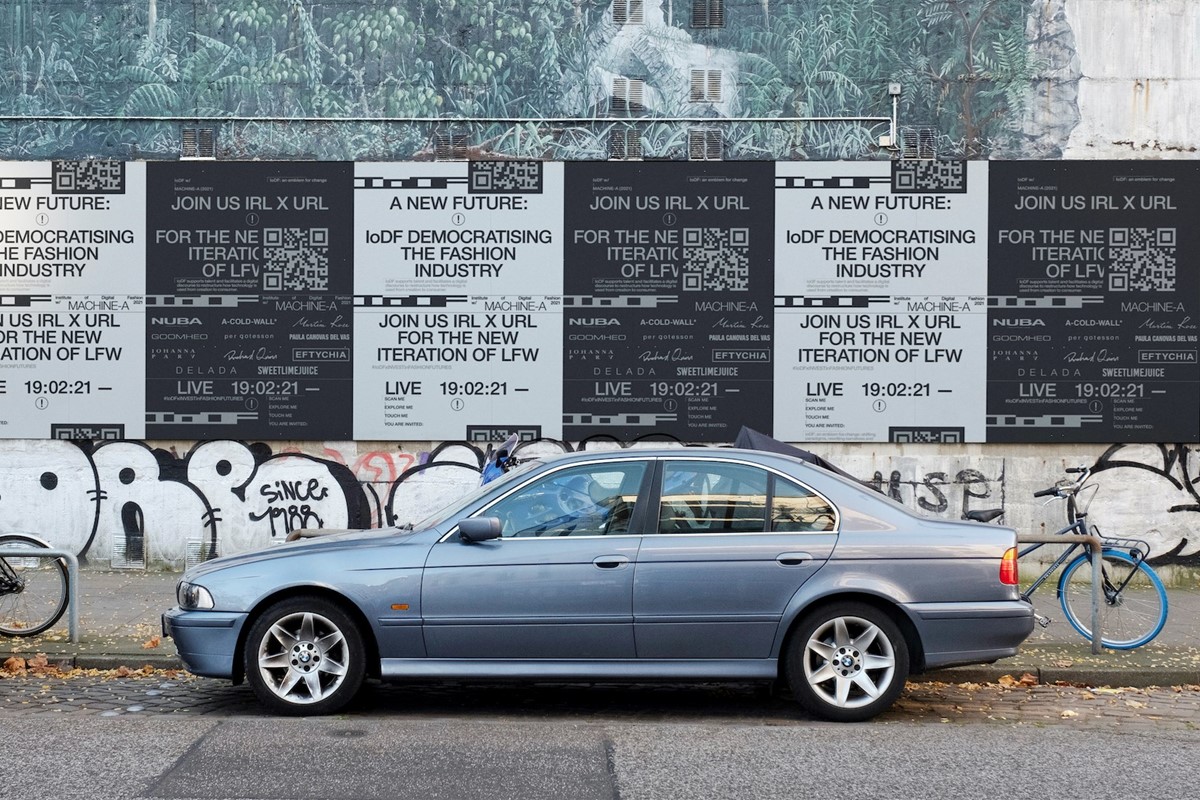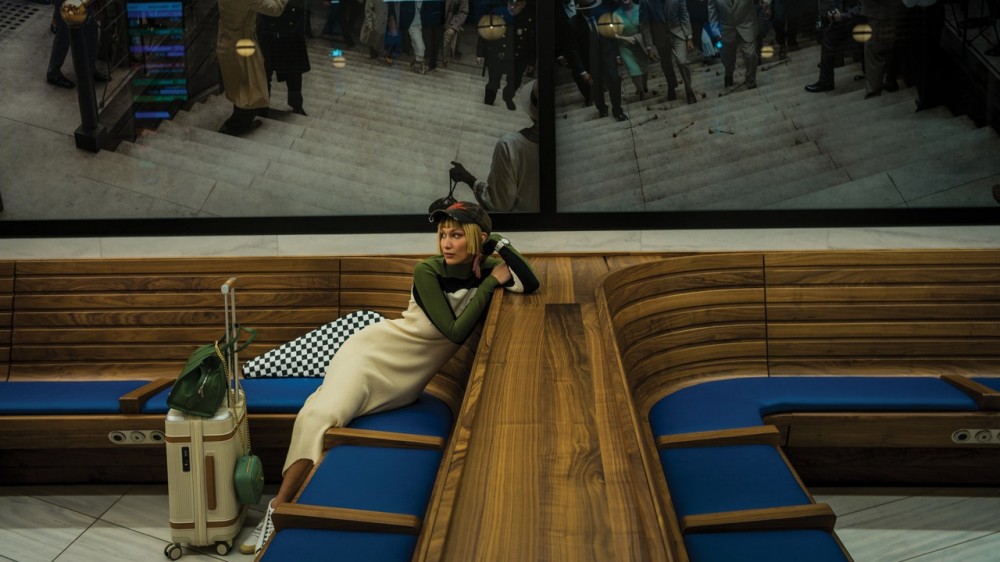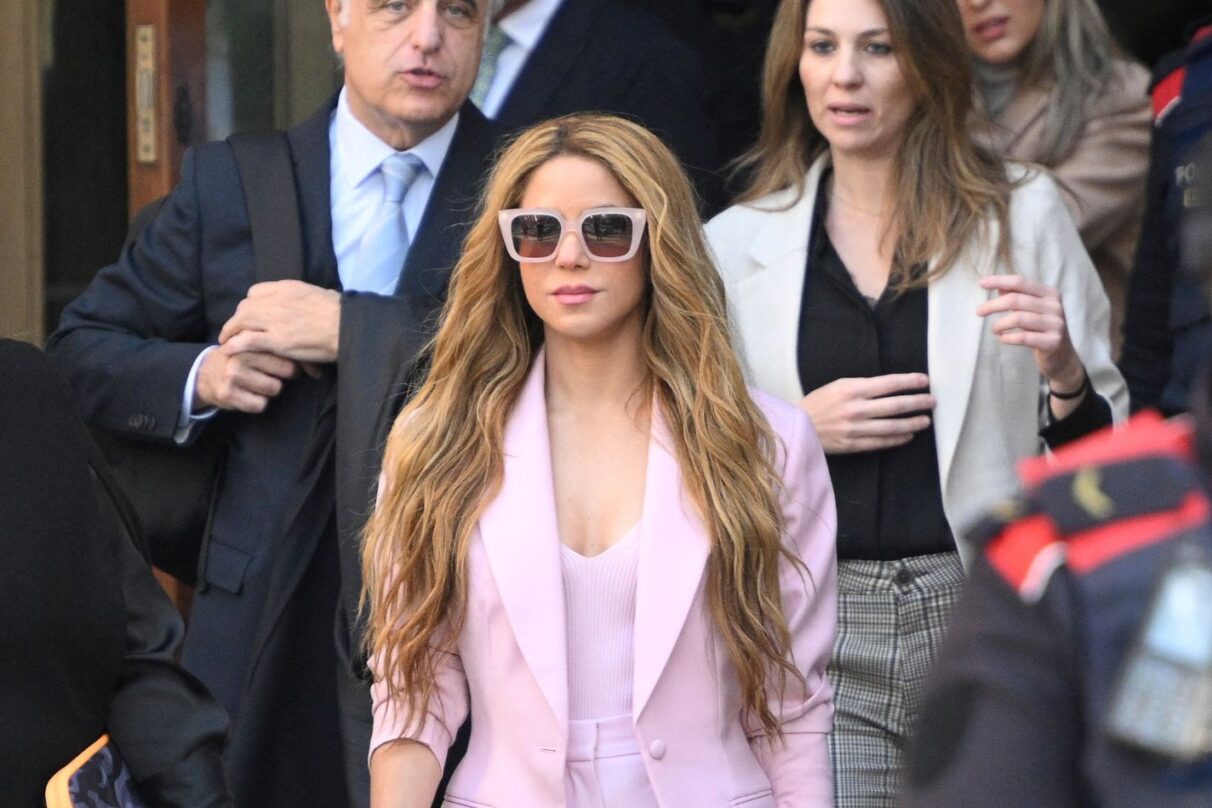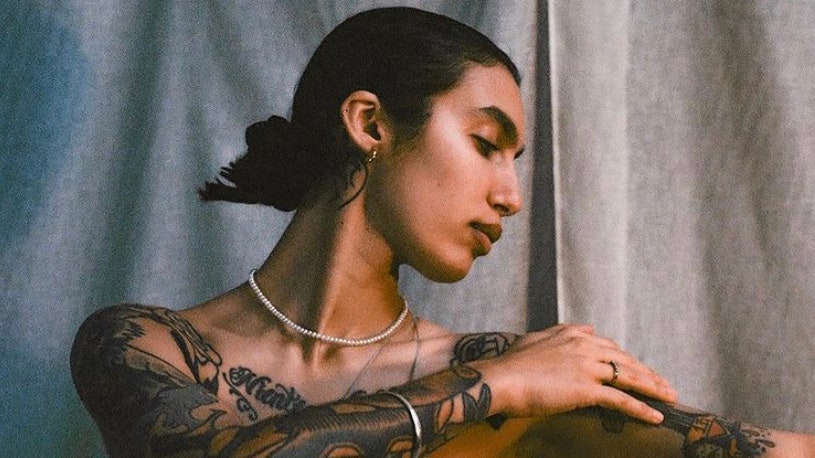
The pioneering trailblazers ready to shake fashion week’s foundations
The Institute of Digital Fashion and MACHINE-A launch ‘A New Future’ – a groundbreaking augmented reality experience everyone can be part of
If you were ever wondering what happened to Edina and Patsy, they’re now running the Institute of Digital Fashion and their names are Leanne Elliott Young and Catty Taylor.
Elliott Young, speaking on Zoom in a satin bathrobe and wide brimmed space-age glasses, is glowing from the joy of becoming a new mum. “When the baby first came out I thought how am I going to love this old-looking worm? But then they gave me fentanyl – oh my god it’s amazing!” she reveals. And then there’s Taylor, who spent the last few days trying their best not to stumble over gravestones as they guerilla-plastered details of their new project, A New Future, around an East London cemetery. The only thing that sets them apart from the loveable but undeniably hopeless Ab Fab duo, is the fact that Elliot Young and Taylor are actually pretty shit hot at their jobs.
Fresh off the back of an elaborate digital couture project, the two have created the first immersive, augmented reality experience for London Fashion Week, as part of a collaboration with cult Soho store and support network MACHINE-A. “We saw what was happening in London and just knew we needed to do something about it,” the pair say, citing the chaos that COVID and Brexit have brought to so many young designers this season. “We spoke to Stavros (Karelis, the founder and buying director of MACHINE-A, who has helped catapult many emerging designers into the global fashion arena) and instantly we came together to help out.”

This AW21, by tapping on an Instagram filter, anyone and everyone can enter the digitally-rendered MACHINE-A space, reimagined as a metallic fashion bunker, and explore the work of some of the store’s hottest brands – with the likes of Martine Rose, GOOM, Per Götesson, Paula Canovas Del Vas, and A-COLD-WALL* among them.
“It would have been really easy for us to recreate all the garments digitally and just show that,” says Elliott Young. “Instead, we decided to focus on the process behind them.” Rather than simply replicating a fashion show, A New Future uses cutting edge technology to invite people behind the scenes, giving us access to the very recipe of a collection, the ateliers, the inspiration, and the moodboards – the ‘between bits’ that are usually omitted from Fashion Week presentations. Given everything else that’s going on, demanding access to a full collection would have felt a little unfair, anyway.
“Fashion is just stuck in tradition. It’s like the Titanic heading towards an iceberg. It’s too big to turn. That’s why we got together. To cause some radical shifts, to try to restructure and re-educate from the ground up” – Leanne Elliott Young
While Taylor reveals there are “pockets of exclusives, which is really exciting”, this experience is all about amplifying the designer’s voice. As you float through the space, you’ll find plinths dedicated to how each creative envisages the future of fashion, along with heartfelt statements on community, sustainability, and the power of design. “It’s both a capsule of where we are now and a message to the future” says Elliott Young. A concept which, in the age of the coronavirus, feels almost unbearably charged.
Although the phrase has been thrown about for what feels like eons now, the project also further pushes their agenda of democratising fashion. Over the weekend, the IoDF are taking over billboards and fly-posting posters, messaging, and QR codes across London, which link to their A New Future filter (hence Taylor’s foray into the graveyard). It means that Fashion Week can occupy spaces where it might not usually have a presence, “bringing the experience to Joe Bloggs on the street” as the co-founders say. “It’s not coveted, there’s no front row, Fashion Week can become a much more democratised space.” Alongside the campaign’s slick application of tech there is an element of scrappy activism too – not just in the revolutionary way Elliott Young and Taylor speak about the future, but in that fly-posting is literally illegal and can be torn down at any moment.

Compared to the official London Fashion Week filter, which flips a 2D card over your head and calls you ‘so last season’ or ‘big dress energy’, Elliott Young and Taylor have cracked the enigma code. In the space of a year, fashion has gone from four major (albeit excessive) international fashion weeks to fuzzy Instagram lives and the odd video. Though it would be remiss not to consider the incredibly difficult circustances that made this flip necessary, for many, it’s been a lacklustre pivot to digital, wrung out like some kind of routine obligation.
When did fashion week become a trip to the hygienist? While most institutions failed to harness “any of the technology which is out there”, as Taylor says, the IoDF have flourished in the break. After all, the fashion system had been suffocating itself long before COVID-19 tightened the cord. With men’s and women’s seasonal collections, resort, pre-fall, and couture, Fashion Week became a tired example of the industry’s bottomless will to consume. “Fashion is just stuck in tradition. It’s like the Titanic heading towards an iceberg. It’s too big to turn,” says Elliott Young. “That’s why we got together. To cause some radical shifts, to try to restructure and re-educate from the ground up.” “That’s not to say we’re anti-Fashion Week, though. We’re just solutions based,” adds Taylor.
For these two, A New Future is exactly that: a manifesto on how to upend the broken fashion system and advocate a “future where it’s no longer about selling clothes, but nurturing the relationship between a designer and the public”. A future where the digital incubates the physical, or “where the two worlds can whirl around and compliment each other”. That means absolutely no use of the word “phygital”, no gimmicky digital garments, and no CGI influencers either (they never did like Lil Miquela). Just real “emotional journeys, which tech can help enable”.




